Tired of Squirrels Raiding Your Bird Feeder? Here’s What Actually Works.
I’ve been setting up bird feeding stations for what feels like a lifetime. Not just in my own yard, but for friends, family, and even at a few local nature spots. And in all that time, the one constant, undeniable challenge is the common gray squirrel. Let’s be honest, these little guys are brilliant, acrobatic, and just unbelievably stubborn. I’ve grown to respect their skills, but I’ve also learned that creating a feeding station that’s truly just for the birds is 100% possible.
In this article
This isn’t about declaring war on squirrels. It’s about understanding how they think and move, then using some smart, physical barriers to gently guide them elsewhere. So many people get frustrated and give up after a squirrel chews through another plastic feeder or figures out a flimsy defense in an afternoon. But the solution isn’t some magic product you buy off the shelf.
It’s a system.
A successful setup is all about placement, the right gear, and respecting the squirrel’s natural abilities. This guide is built on years of trial and error, watching thousands of squirrel attempts, and figuring out what holds up in the long run. Forget the myths and potentially harmful tricks. We’re going to dive into the reliable methods that will save you a ton of money on birdseed and bring the birds flocking back to your yard.
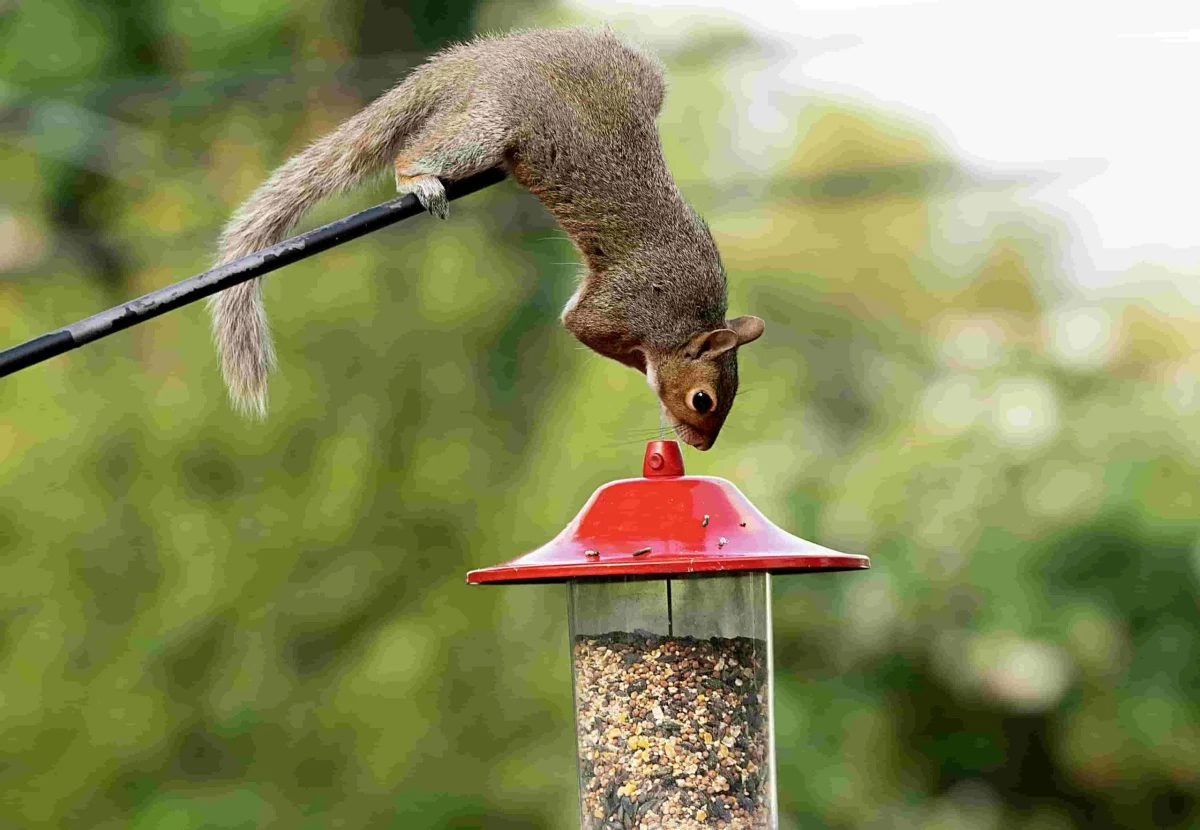
First, Understand the Enemy’s Playbook
Before you can outsmart a squirrel, you have to know what they’re capable of. Their biggest assets are powerful hind legs for jumping, sharp claws for climbing, and a brain that’s surprisingly good at solving problems. Most squirrel-proofing setups fail simply because we underestimate them. So, we need to think in terms of physics.
You might have heard of some general placement rules. I call it the 10-5-Rule, and it’s based on a squirrel’s physical limits. Knowing these numbers is half the battle.
• The Horizontal Jump: 10 Feet. Your average squirrel can leap 7 or 8 feet sideways without breaking a sweat. A really determined one, getting a running start from a fence or deck railing, can stretch that to a full 10 feet. This is the most important number. Any tree, roof, or railing within a 10-foot radius of your feeder is a launchpad.
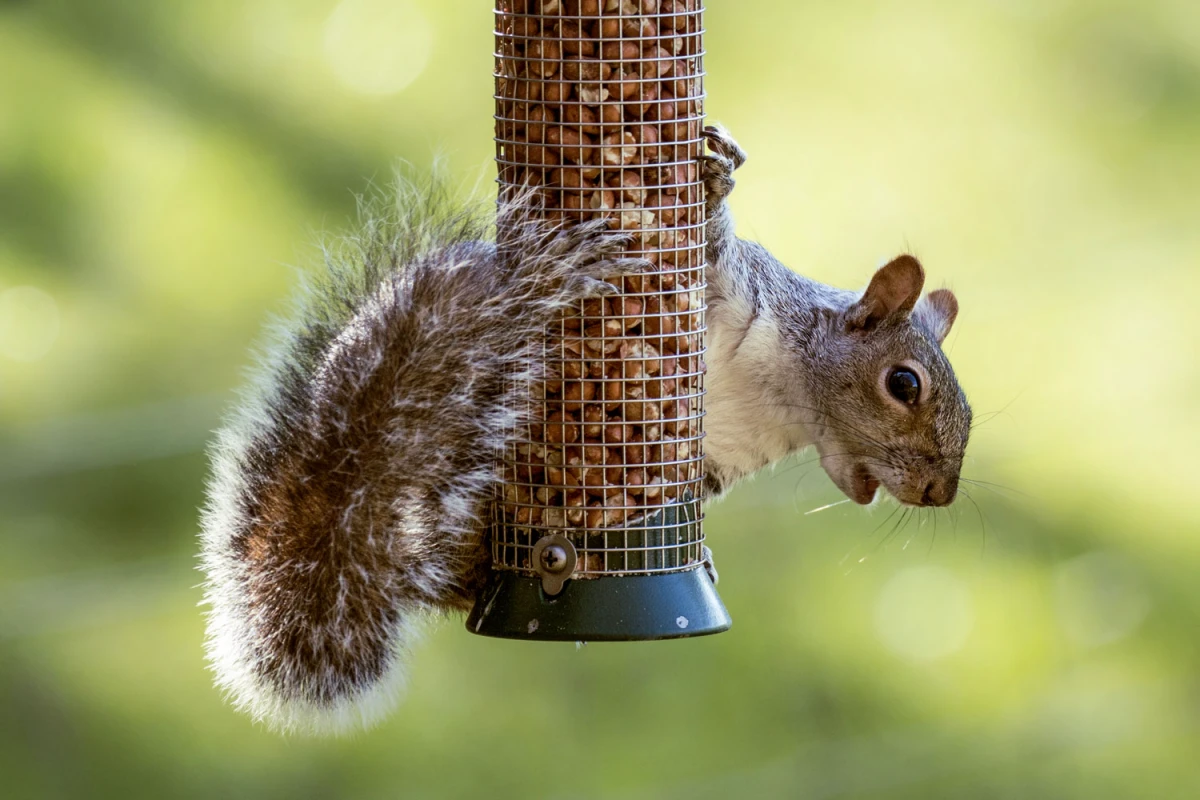
• The Vertical Jump: 5 Feet. From a dead stop on the ground, a squirrel can shoot about 5 feet straight up. This is why the height of your feeder matters so much. If the bottom of the feeder is only four feet high, they can just hop right up to the buffet.
• The Aerial Assault: Any Height. Squirrels have zero fear of heights. I’ll never forget the time I spent $80 on a fancy feeder, hung it from a branch I thought was safe, and watched a squirrel just drop 15 feet onto it like a little furry paratrooper. That’s when I learned the ‘from above’ rule the hard way. Their tail acts like a parachute, so a clear overhead space is just as vital.
My Unbeatable Setup: The Pole and Baffle System
Okay, so you know the rules of the game. Now what do you actually do? After trying just about everything, my go-to, never-fail solution is a simple pole and baffle system. This is where you invest once and solve the problem for good.
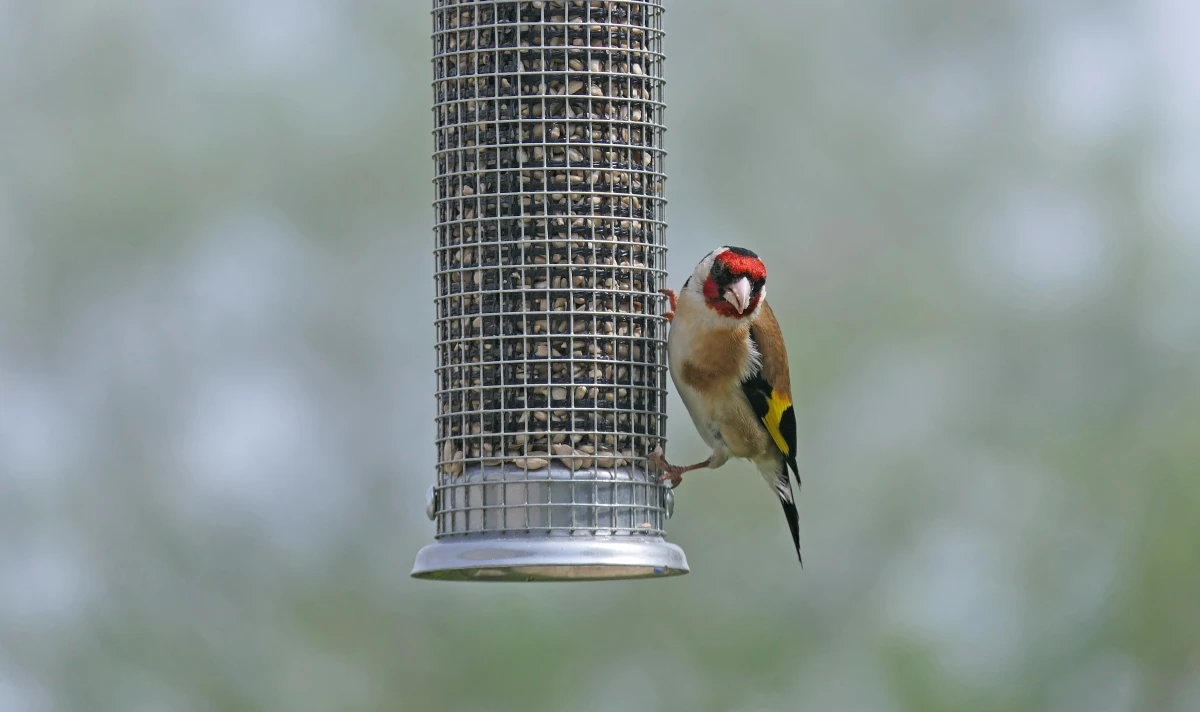
The setup has two key parts: a straight metal pole and a large, slippery baffle. The pole should be a standard 1-inch diameter steel pole, the kind you can find at any wild bird store or even some big-box hardware stores. The baffle is the real hero here. You want a cylinder or torpedo-style baffle that’s at least 15-18 inches long and about 6-8 inches wide. It attaches to the pole below the feeders.
Heads up on the cost: a good setup isn’t the cheapest solution upfront. Expect to pay around $40-$60 for a solid baffle and another $30-$50 for a decent pole system. But trust me, you will save that much in wasted seed in just a few months. It’s a worthy investment.
How to Install It for Maximum Squirrel Rage in 3 Steps
Putting it together is easy, but the details are critical.
First, sink your pole into the ground, making sure it’s sturdy and straight. Remember the 10-5 Rule! It needs to be at least 10 feet away from any potential launch points.
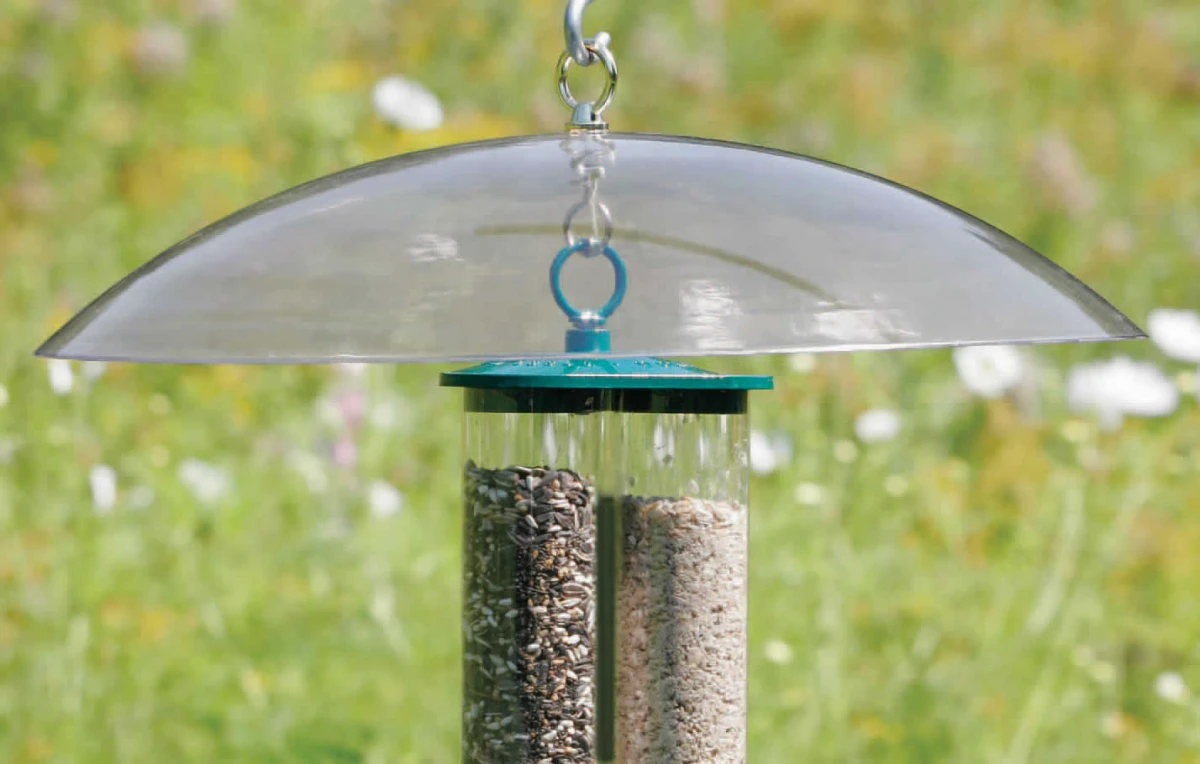
Second, slide the baffle onto the pole before you attach any feeder arms or the feeders themselves. It should move and wobble a bit—that’s part of what makes it effective.
Third, and this is the most important step: make sure the top of the baffle is at least five feet off the ground. If it’s any lower, a squirrel can just leap from the ground, clear the baffle, and climb the rest of the way up the pole. This single detail is where most people go wrong.
Common Mistakes I’ve Seen a Million Times
Over the years, I’ve seen some common errors that doom a setup from the start. Please, don’t do these!
A classic blunder is using a decorative double shepherd’s hook. Those lovely curls and twists are basically a ladder for a squirrel. Stick to a simple, straight pole.
Another one is placement. People follow the 10-foot rule for trees and fences but then place the pole right next to a patio chair, a large decorative rock, or even a clump of tall ornamental grass. Squirrels will use anything for a boost, so the area around the pole’s base needs to be clear, too.
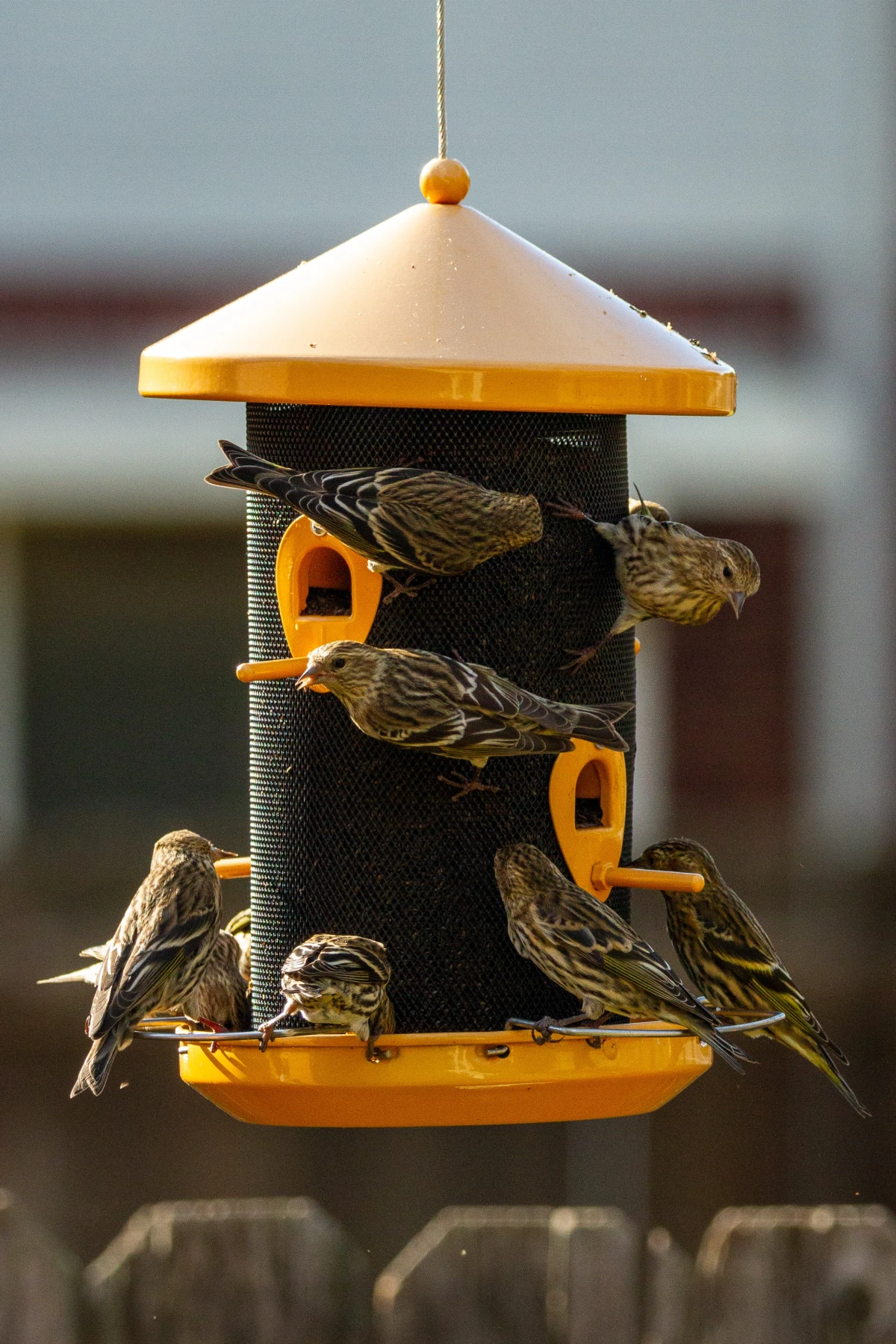
And, of course, always look up! That single, tiny branch hanging over your feeder is an open invitation from above.
Okay, But What About Those ‘Squirrel-Proof’ Feeders?
Ah yes, the weight-activated feeders. The ones with a cage that drops down over the seed ports when something heavy lands on the perch. Do they work? The answer is… sort of. To be frank, they are a good part of a system, but they aren’t a foolproof solution on their own. I’ve seen very clever squirrels learn to hang upside down from the top and reach the ports without triggering the mechanism.
Plus, they can sometimes be too sensitive, shutting out heavier, desirable birds like cardinals and woodpeckers. My advice? They work best when they’re used on a properly baffled pole. That way, they provide a second line of defense if you happen to have a truly Olympic-level squirrel in your neighborhood.
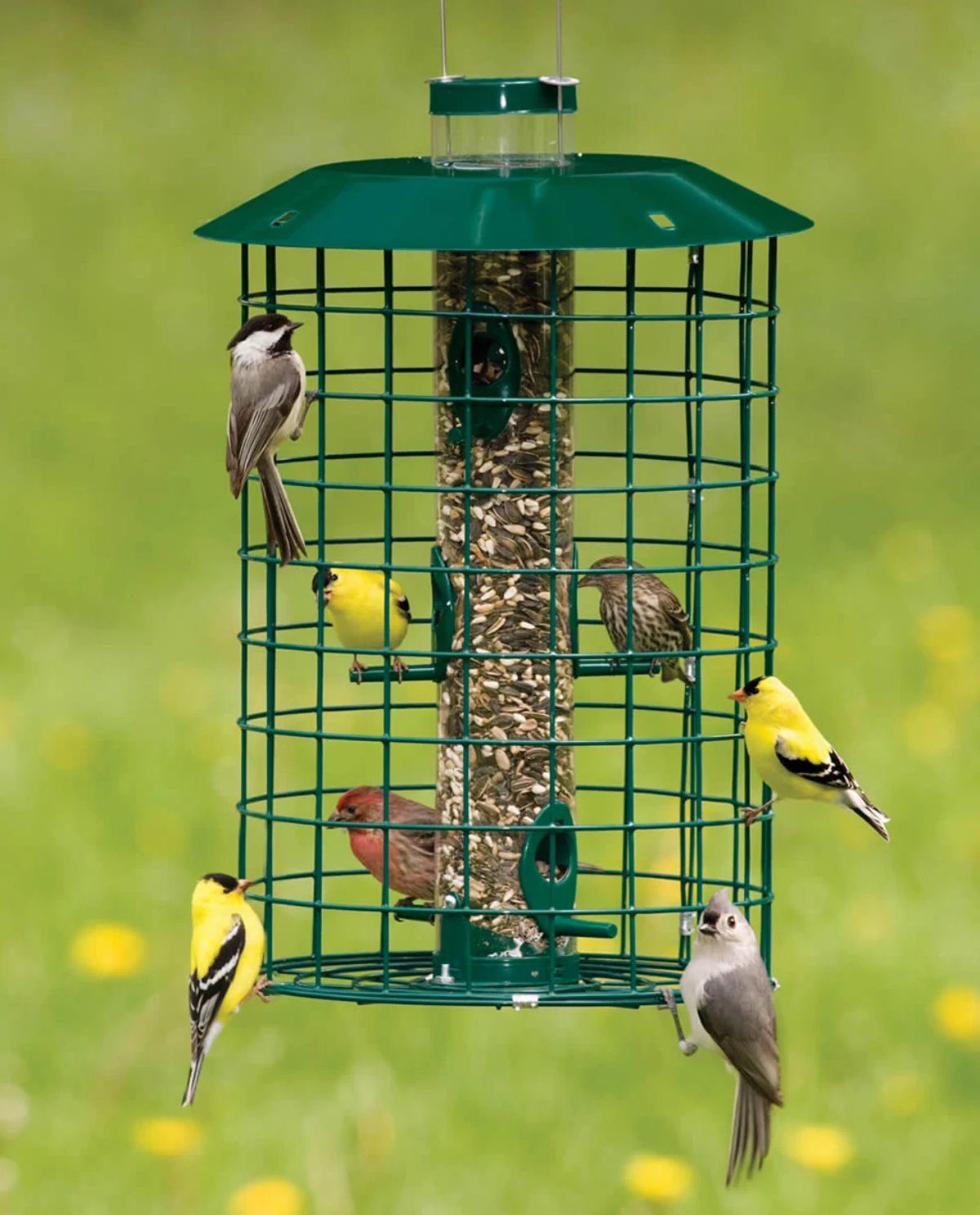
What If My Yard Is Too Small for the Rules?
I get it. A lot of us have smaller yards, balconies, or live in a wooded area where the 10-5 Rule just isn’t realistic. You do have options, though they require a bit more management.
For a deck or wall, you can get a long-reach arm bracket. Mount it as high as possible, and hang your feeder from the very end. You can also add a dome-shaped baffle above the feeder to block squirrels coming down the arm.
Another strategy is to change the menu. Squirrels aren’t huge fans of safflower seed, but cardinals, chickadees, and titmice love it. They also tend to ignore Nyjer (thistle) seed, which is perfect for finches. It’s more of a deterrent than a solution, but it can definitely help tip the scales in the birds’ favor.
Galerie d’inspiration

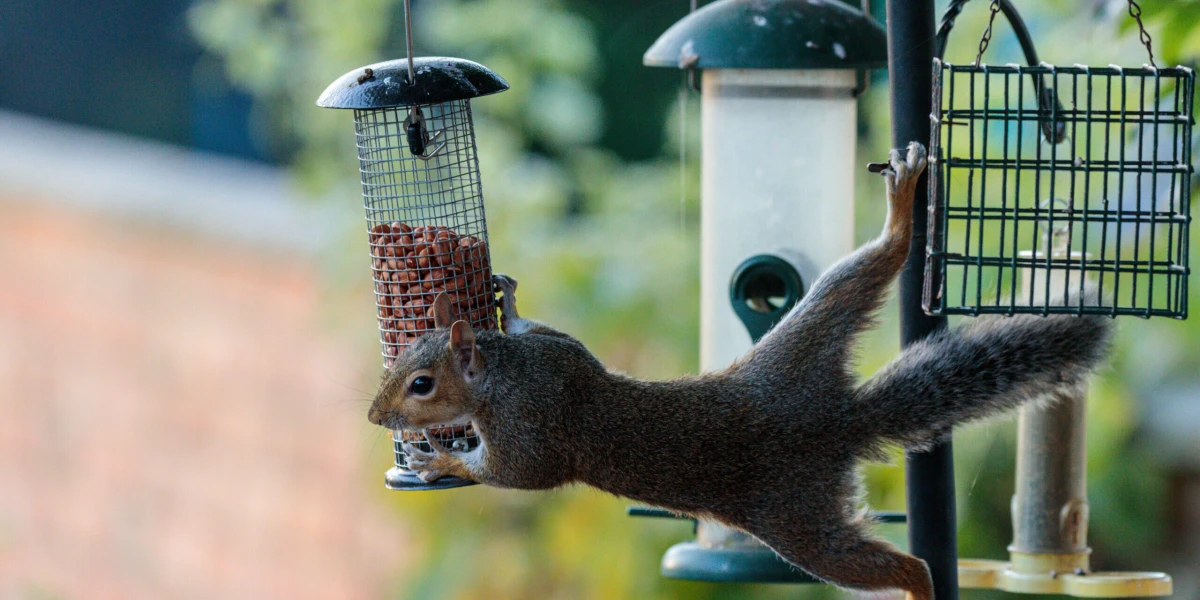
Does adding hot pepper to birdseed really work?
Yes, and it’s based on simple biology. Birds are completely unaffected by capsaicin, the compound that makes chili peppers spicy. Mammals, including squirrels, feel the heat intensely. Mixing in cayenne pepper or purchasing pre-treated seeds like Cole’s Hot Meats™ can be an effective deterrent. However, be mindful: the fine pepper dust can be an irritant to your own eyes and nose when filling the feeder. It’s a popular method, but it’s not a one-size-fits-all solution, as some persistent squirrels may still brave the heat for a meal.
A truly squirrel-proof station relies on a system, and the foundation is the pole and baffle. Forget wooden posts or standard shepherd’s hooks that offer easy grip. The gold standard is a smooth metal pole, at least 1/2 inch in diameter, paired with a specialized baffle.
- Look for a pole at least 6 feet tall once installed in the ground.
- Choose a large, dome-shaped or cylindrical










